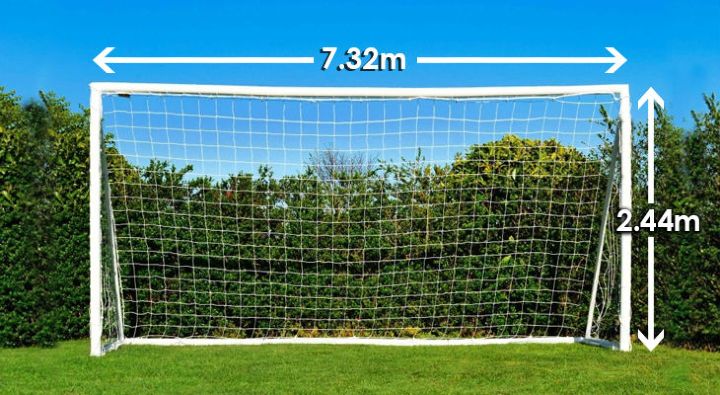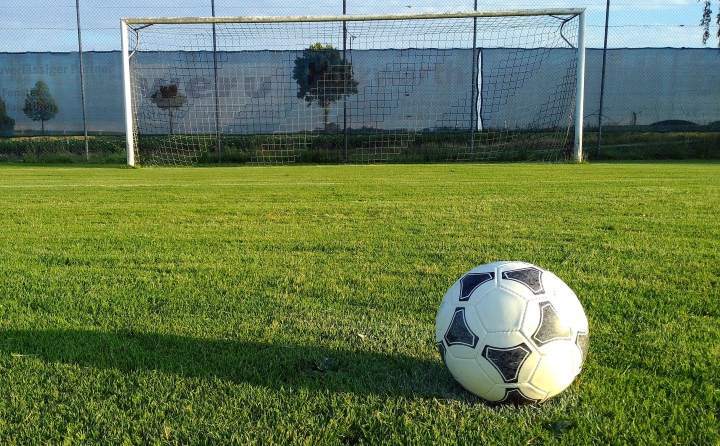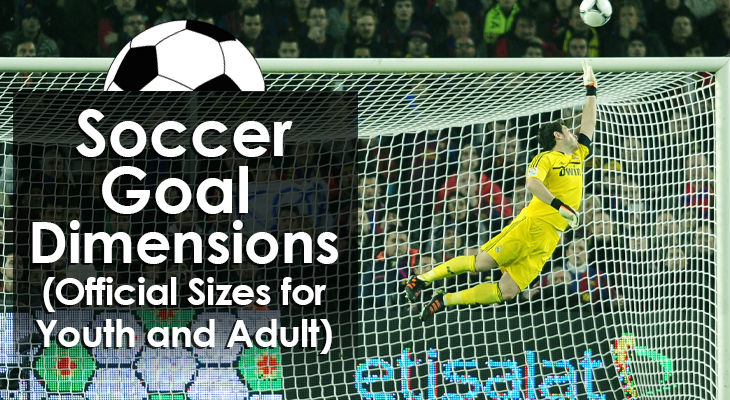Soccer Goal Dimensions (Official Sizes for Youth and Adult)
One of the best things about soccer is that as long as you have a ball, you can play anytime anywhere as almost anything can serve as a goal.
All of us have played many games using rubbish bins or chairs to create two goals, and I bet you have too.
For official soccer matches, however, there are a couple more rules and regulations to take into account...
And one of the most important ones is the actual soccer goal dimensions.
As the main focus of the game is to score more goals than your opponent, it’s obvious that getting the soccer goal size correct is of the utmost importance.
With a number of different official sizes in use, here are the standard soccer goal dimensions that are used for both youth and adult soccer.
Official Adult Soccer Goal Dimensions
Although there are numerous soccer associations around the world, it is the International Football Federation, otherwise known as FIFA, which regulates and oversees the beautiful game.
Due to this, the rules and laws of the game are the same for everyone and this includes the size of the field of play and the exact measurements of the soccer goals themselves.
In the adult game, the soccer goal posts must be 2.44 metres in height and so the crossbar should rest eight feet above the ground.
From one post to the other the goal should measure 7.32 metres in length which equates to twenty four feet in the imperial system.

Along the ground between the two posts is the goal line, which is drawn on in chalk and it lies directly below the crossbar.
The two posts and crossbar must be the same width and depth, and the goal line must also match their width which cannot be more than twelve centimetres in total.
These four parametres make up the soccer goal and a net can be attached to stop the ball from going too far away once a goal has been scored.
A net is only permitted if it doesn’t get in the way of the goalkeeper and is properly attached to the goalposts, crossbar, and the ground a little distance behind the goal.
The goals themselves must be white in colour, be made out of wood or metal, and can either be round, square, or rectangular in shape as long as they don’t pose any threat to the soccer players out on the pitch.
While the soccer goal dimensions are crucial to the sport, the location of the goals is equally important.
One of them is located at each end of the pitch directly in the middle of one of the goal lines.
These standard sizes apply for all adult matches around the world, but the size of the goals understandably changes as you drop down to the youth levels.
Official Youth Soccer Goal Dimensions
While different soccer associations around the world have their own set of rules concerning youth soccer, in general the goals get smaller the further down the age groups you progress.
If you are looking to buy goals for your club, then it’s a good idea to check with your local league about the soccer goal dimensions that are required as there are often variations between leagues.
This is because younger age groups often play five on five, seven on seven, or nine on nine instead of the standard eleven-a-side matches which adults and teenagers play.
Let’s now take a look at the different sizes that are used in the United Kingdom and the United States.
United Kingdom
In the United Kingdom, it’s only at the age of thirteen that children start playing on a full size pitch.
Before that the goals and field sizes are a lot smaller.
At U7/U8, the children play five-a-side soccer as this hones their skills and gives them more time on the ball. The pitch is smaller and the goals measure six feet in height and span twelve feet in width.
While the U9/U10s use the same soccer goal dimensions, they play on a slightly larger pitch and play seven-a-side.
It is only at the U11/U12 age group that the soccer goals get larger and here they use goalposts which are seven feet in height and the width of the goal spans sixteen feet. At this age the pitch again lengthens and widens so they progress on to playing nine versus nine.
U13/U14 is when they first begin to play eleven-a-side soccer and the Football Association recommends using seven feet by twenty-one feet goals although normal adult sized goals are also permitted if this isn’t possible.
After that age group, youths simply use the standard adult sized goals (so eight by twenty-four) which are used around the world.

United States
In the United States, US Youth Soccer recommends the following goal sizes for youth soccer.
Starting off at 6U, the organisation suggests using goals that measure four feet in height and six feet in width, and at this age group they should play four or three-a-side to help develop their skills on the ball.
At 8U the goals remain the same size and the games should be four or five-a-side.
It is only at 10U that the soccer goal dimensions increase and here they measure either six feet by twelve feet or six feet by eighteen feet. At this age group they play seven-a-side.
At 12U the goals can either be six feet by eighteen feet or increase in width to twenty-one feet across and leagues allow teams to field between eight and eleven players.
After this age group the youths progress to playing full size soccer on the standard pitches and use the adult sized goals.
Conclusion:
When coaching youth soccer it’s very important to use the correct soccer goal dimensions as this helps the players to develop their technique and skills in an appropriate manner.
The goal sizes need to be a lot smaller and the exact measurements vary by federation, so if you are looking to buy goals for your club, check with your local league to see what the exact requirements are.
For adult soccer it is much simpler as there is a standard size that is used around the world.
Read Next: Soccer Field Dimensions (Official Sizes for Youth and Adult)

